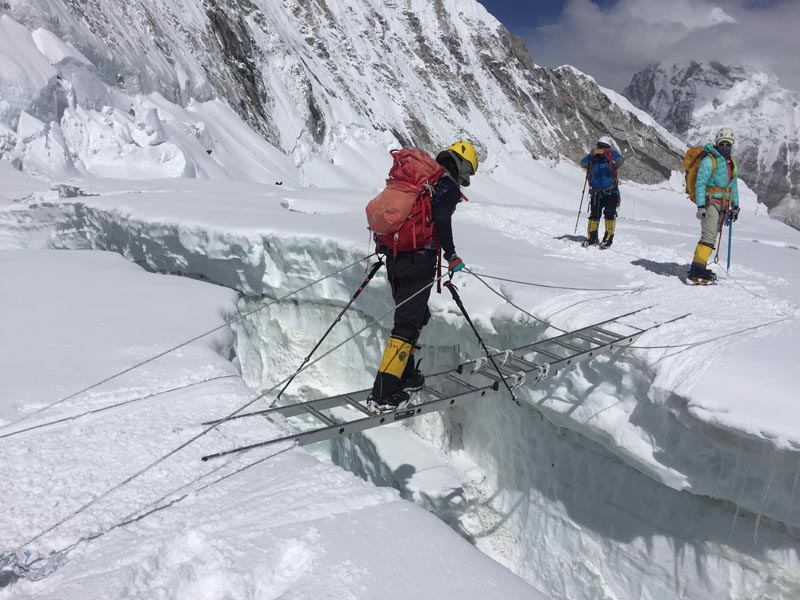Let one climber scale one peak per season: Panel
Kathmandu, August 14
A panel formed to study the current situation and policies of country’s mountaineering sector has suggested the government to allow one climber to scale only one peak in one season.
Submitting a report to Tourism Minister Yogesh Bhattarai today, the panel has recommended the government to adopt ‘one climber-one peak-one season’ policy to make mountaineering sector more secure and safe.
“In order to make mountaineering sector safer, this panel has recommended the Ministry of Culture, Tourism and Civil Aviation (MoCTCA) to tighten the standards of the country’s mountaineering sector,” said MoCTCA Joint Secretary Ghanashyam Upadhyaya, who had led the panel.
As unhealthy competition between trekking agencies to attract more climbers has raised their safety risks, the panel has recommended the government to revise the standards of climbers for expedition, he added.
“Climbers must have knowledge, experience and training regarding mountaineering. Climbers must submit the related documents to Department of Tourism before they are issued climbing permits,” as stated in the report.
The report has further mentioned that a rule of ‘one guide per climber’ for expeditions of Mount Everest (8,848m) or the peaks above 8,000 metres should be implemented.mSimilarly, only those climbers who have successfully scaled peaks of above 6,500m in Nepal should be allowed to climb Mt Everest or peaks above 8,000m, the report states.
“In the race to attract more climbers, trekking agencies are selling mountaineering packages at cheap rates, which have caused congestion at Mt Everest,” Upadhyaya said. Hence, the panel has recommended revising the policy for trekking agencies.
“Only the trekking agencies that have either managed expeditions for peaks above 8000m or that have three years of successful expedition records should be allowed to operate Mt Everest expeditions,” reads the panel report.
Likewise the agency must have a skilled rescue team and a doctor equipped with knowledge on mountaineering. In the case of guides, the report has recommended that only Nepali citizens should be allowed to work as Sirdars, mountaineering guides and high altitude workers. Similarly, regarding liaison officers, the report has suggested to adopt a policy of deploying integrated team of liaison officers rather than deploying one liaison officer for one team.
“In order to address the existing issues of liaison officers, it would be better to deploy one group of liaison officers for five expedition teams. The integrated group of liaison officers should include one deputy secretary of the MoCTCA as group leader. Likewise, the group should compromise two officers, one doctor, two captains of Nepali Army, two officers from Armed Police Force or Nepal Police, two second-class non-gazette officers and one computer operator,” states the report.
Of the 11 people who died during spring climbing season this year, nine were ascending from the southern side of Mt Everest in Nepal. The MoCTCA had formed a panel on June 7 to study the present status of the country’s mountaineering sector and submit its recommendations to improve the sector.
Responding to the report, Minister Bhattarai said that the ministry will adopt the recommendations presented by the panel’s report. “Based on this report, we have to amend the related acts, regulations and some standards regarding mountaineering sector. And we may have to set new criteria for the improvement of mountaineering sector,” he said. “Nepali peaks are safe for climbing, so I assure that these recommendations will be implemented to make this sector safer.”






